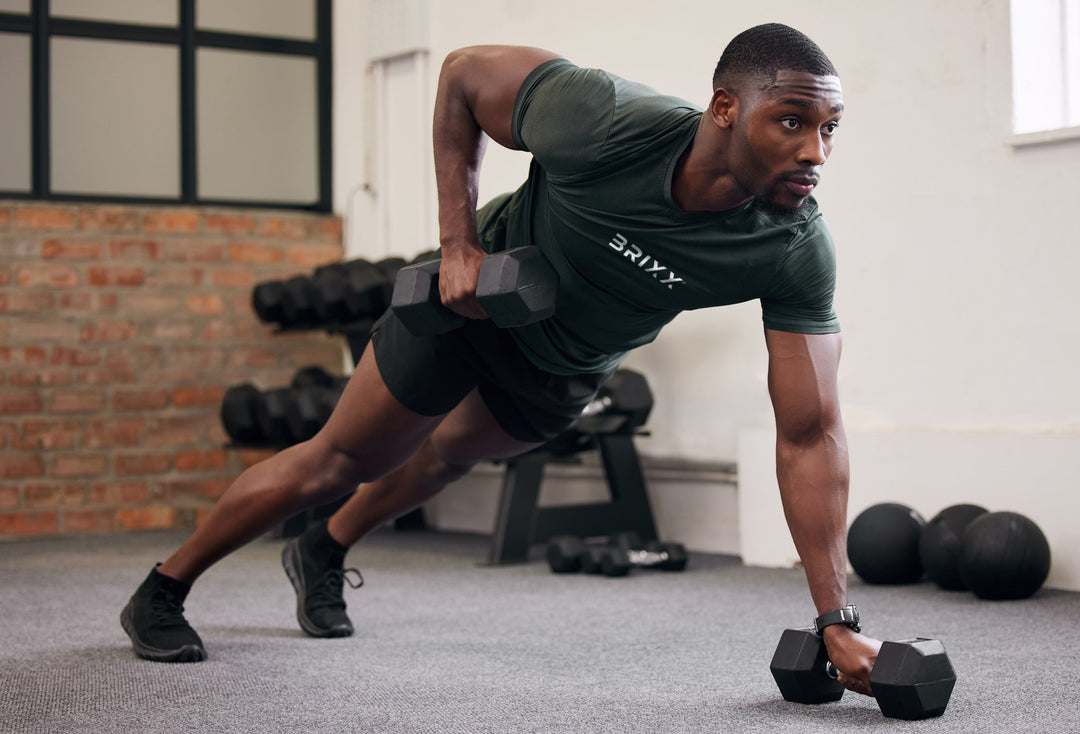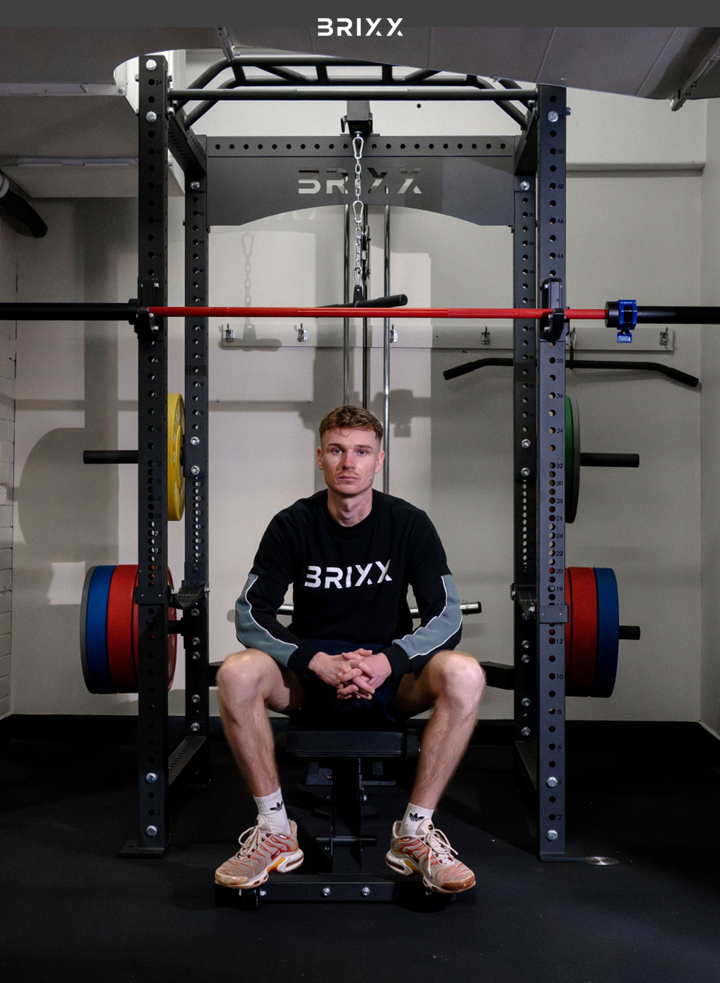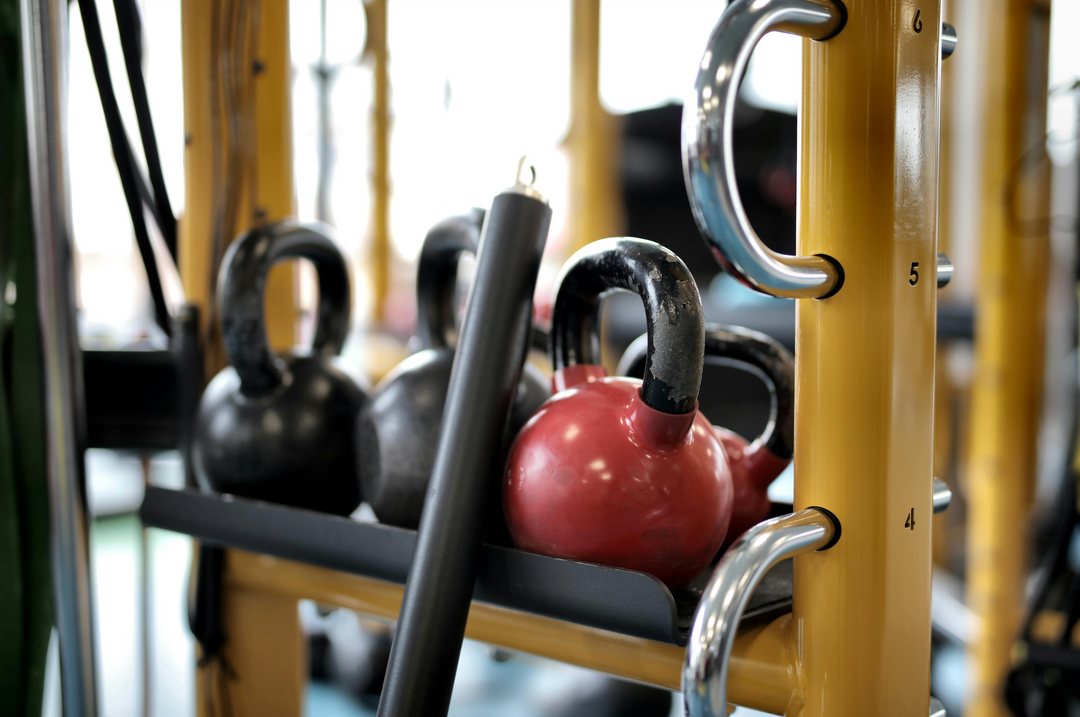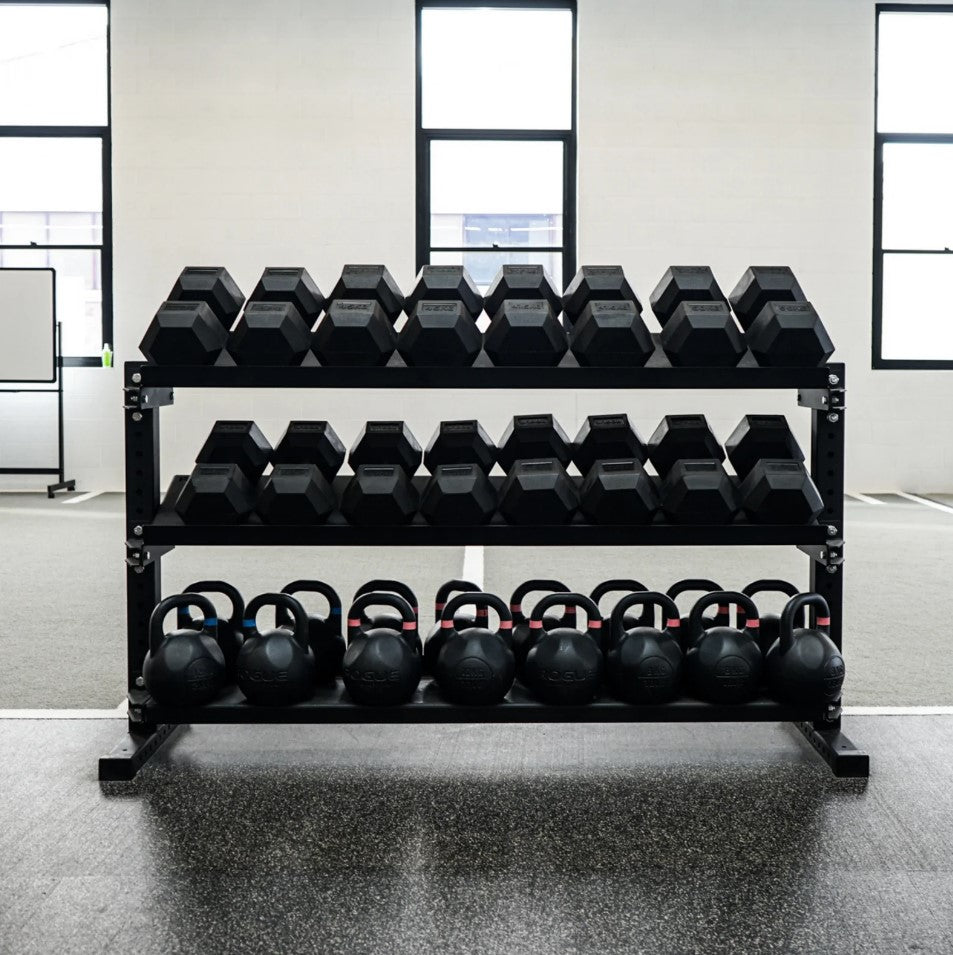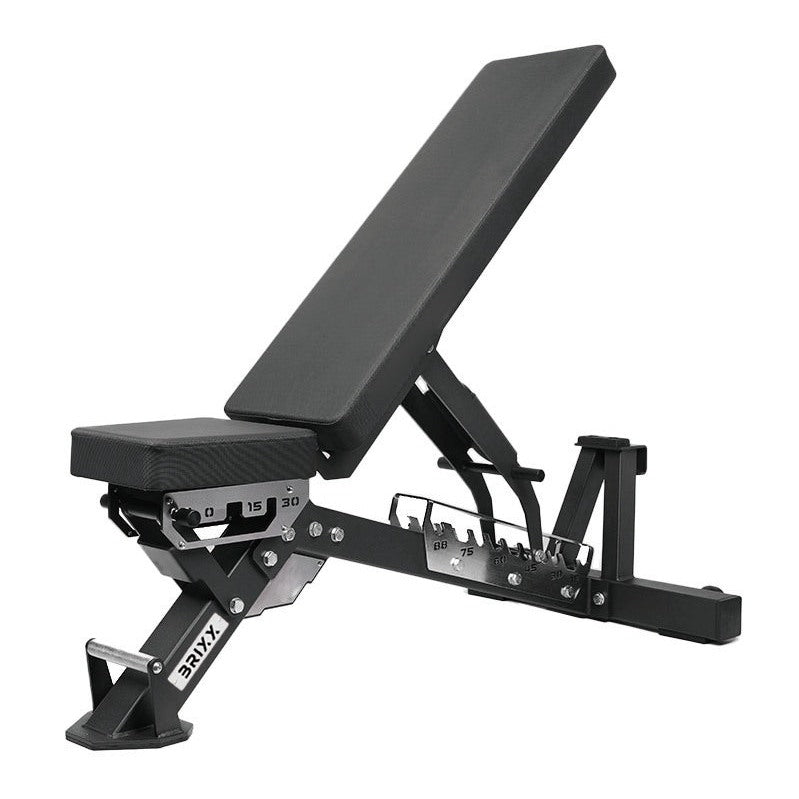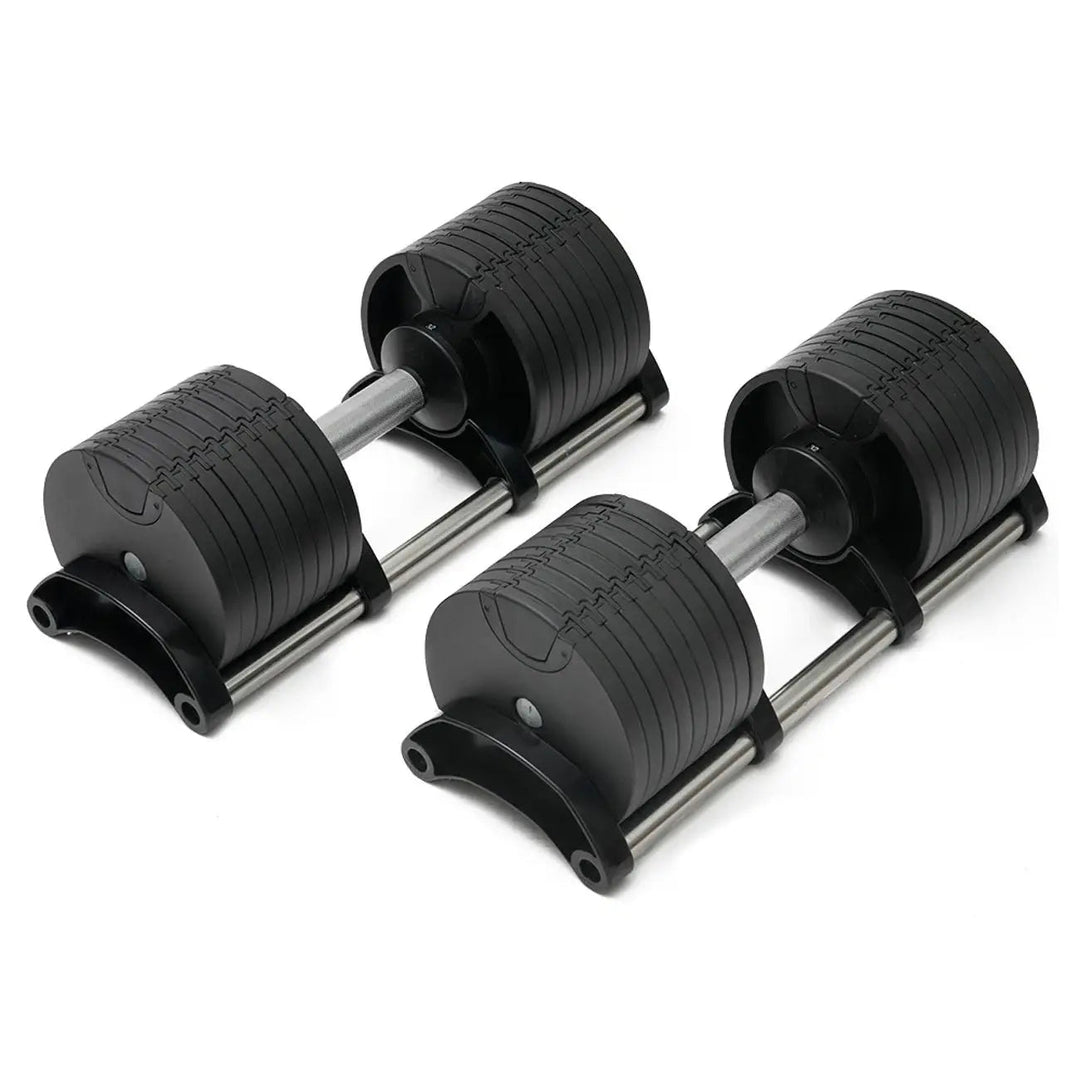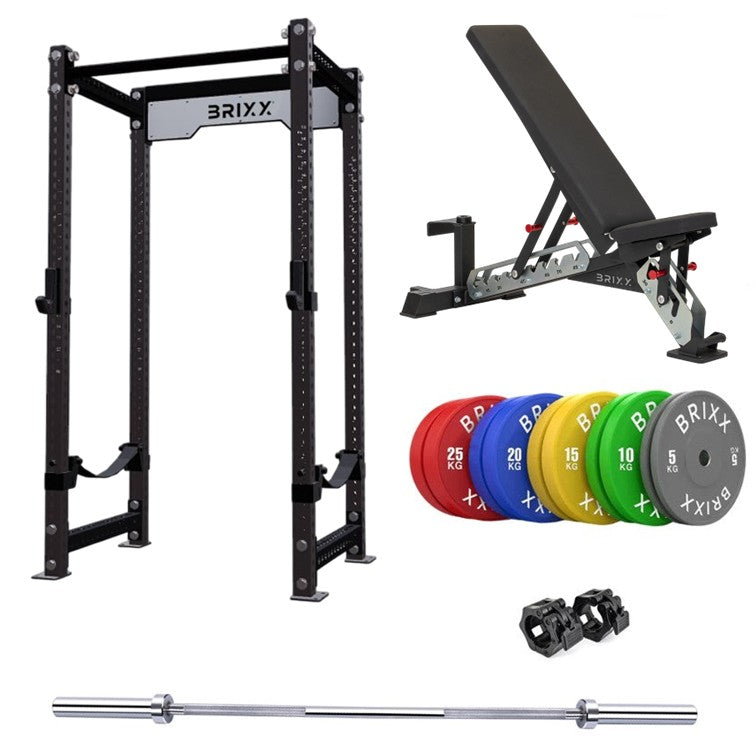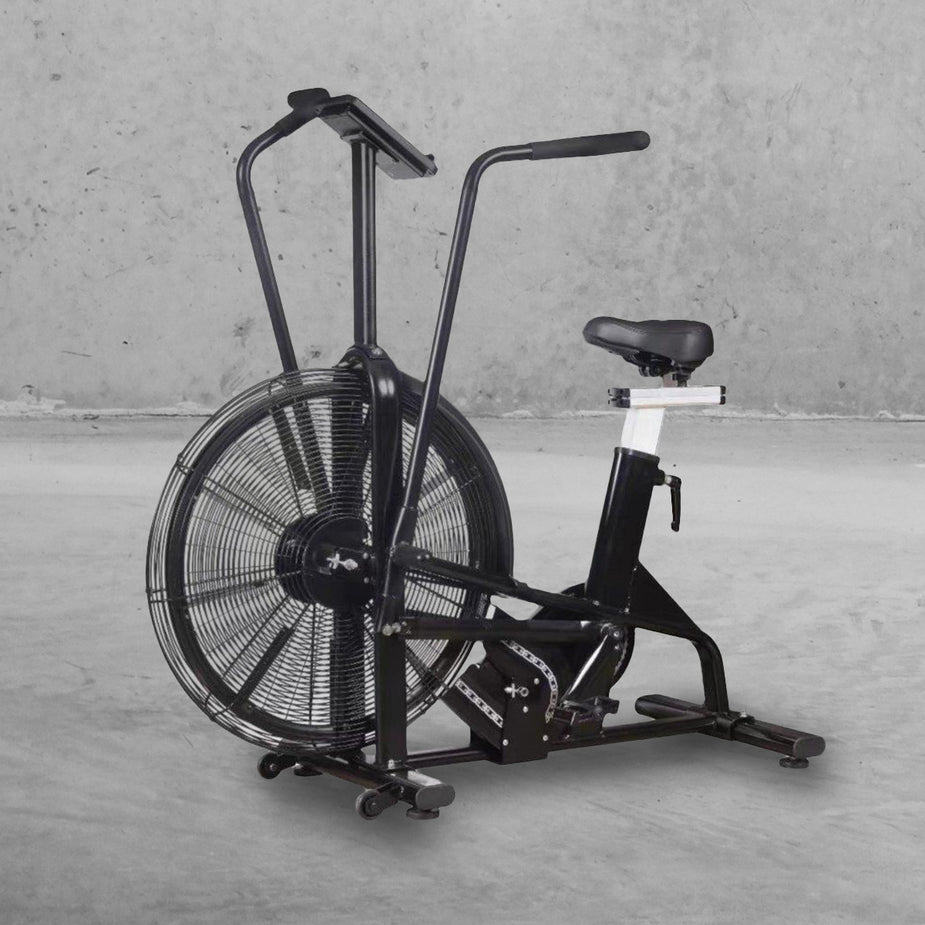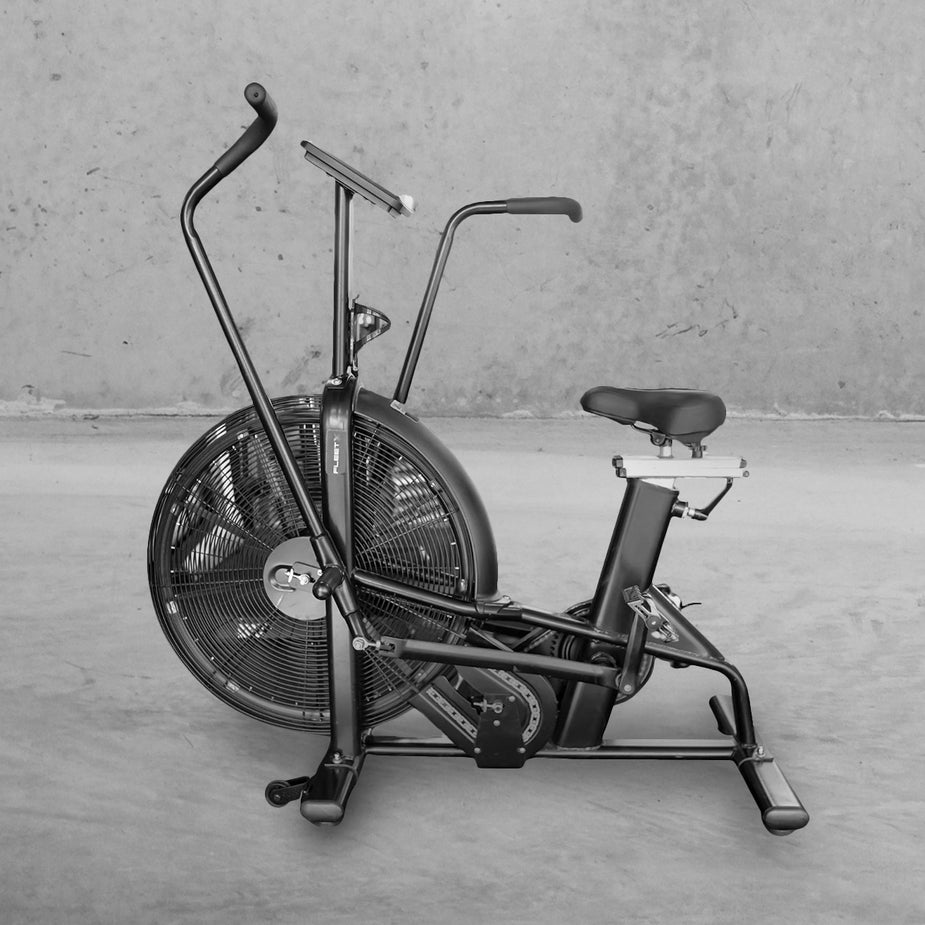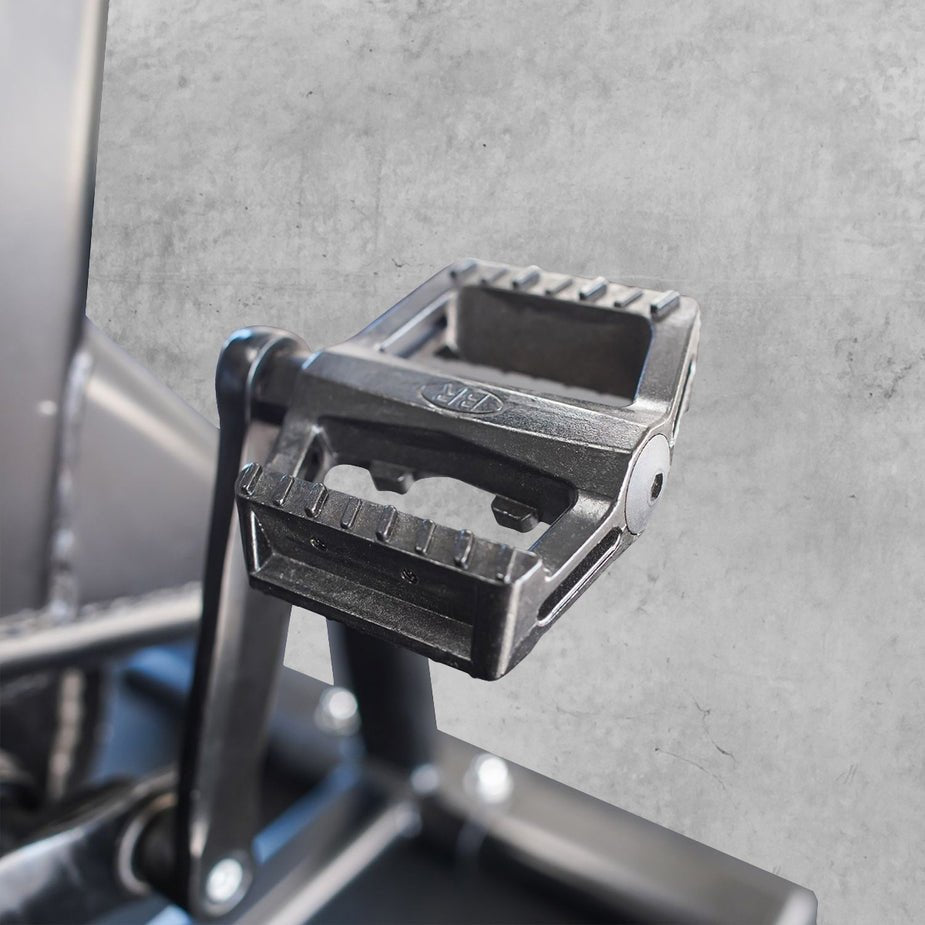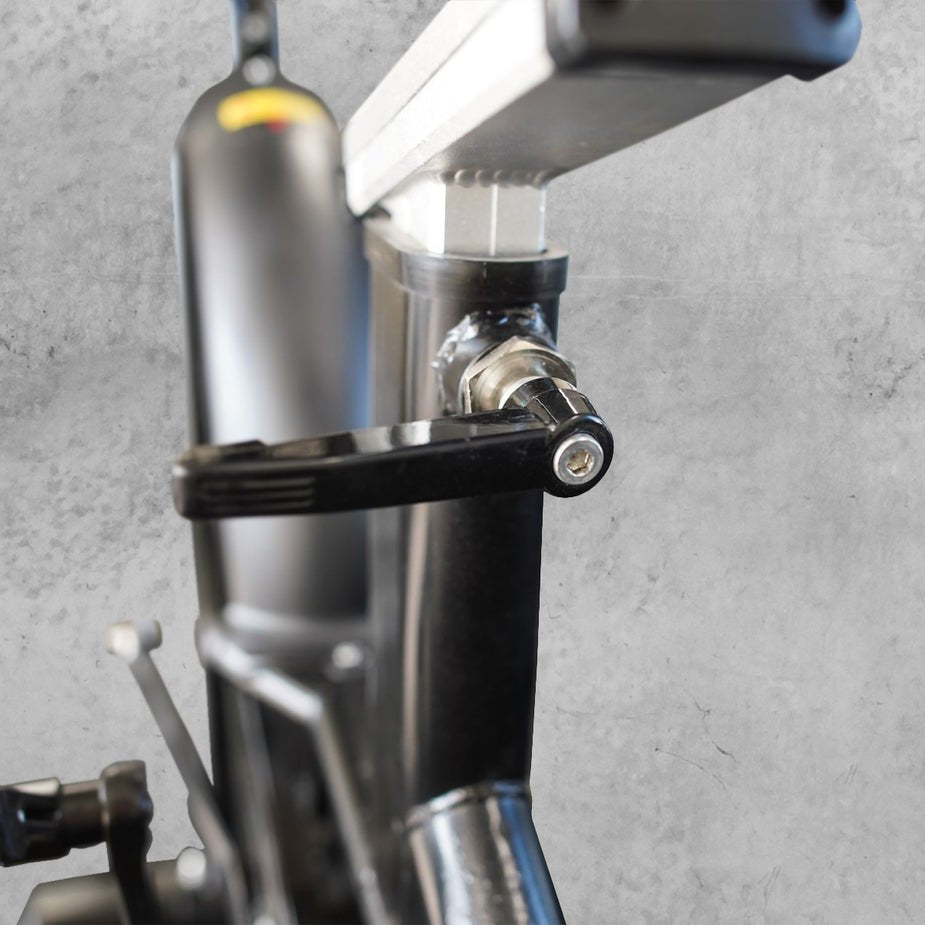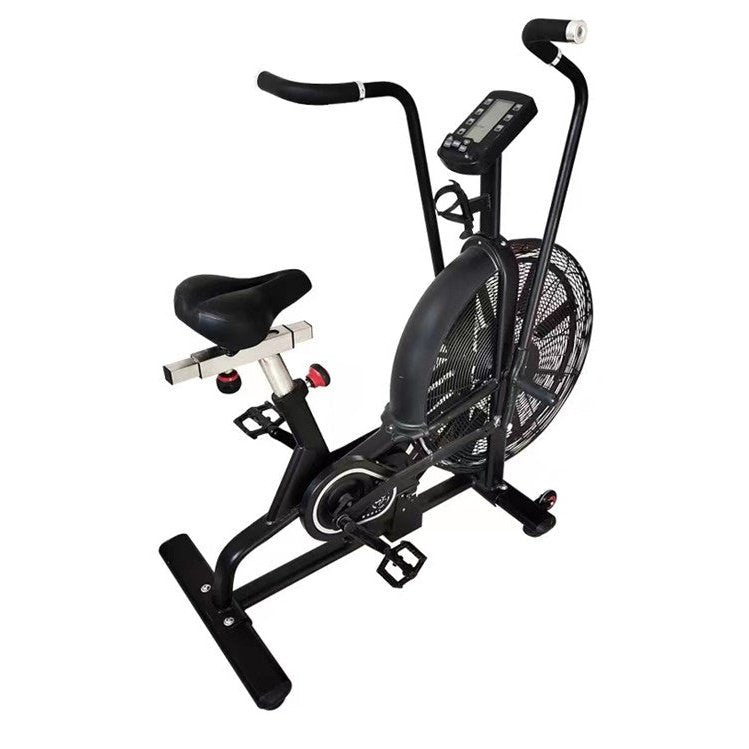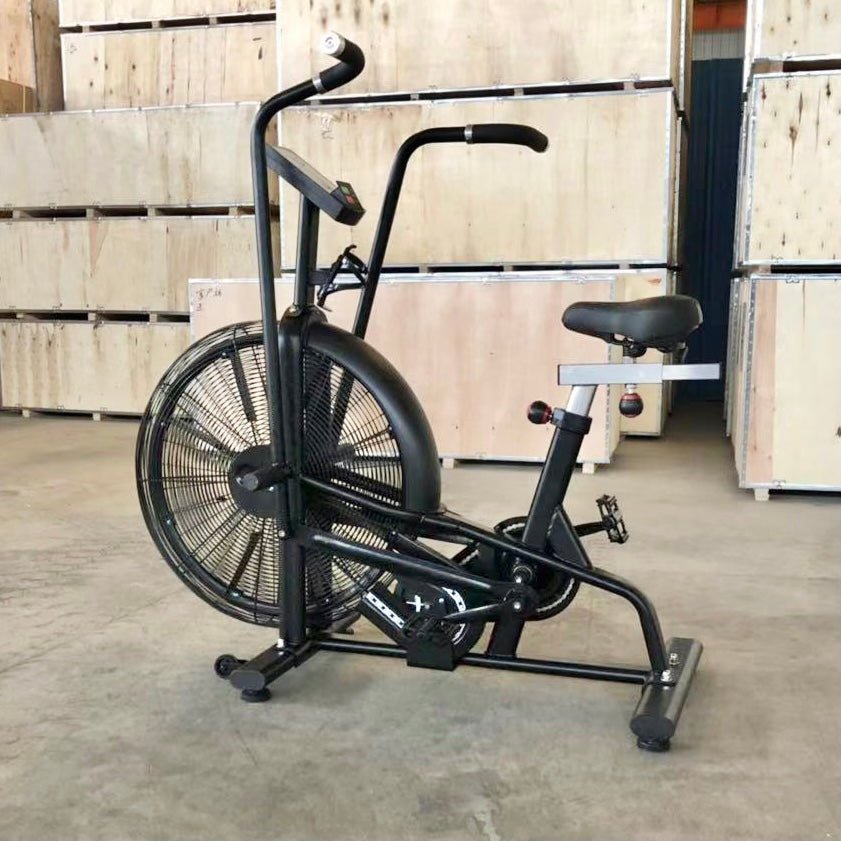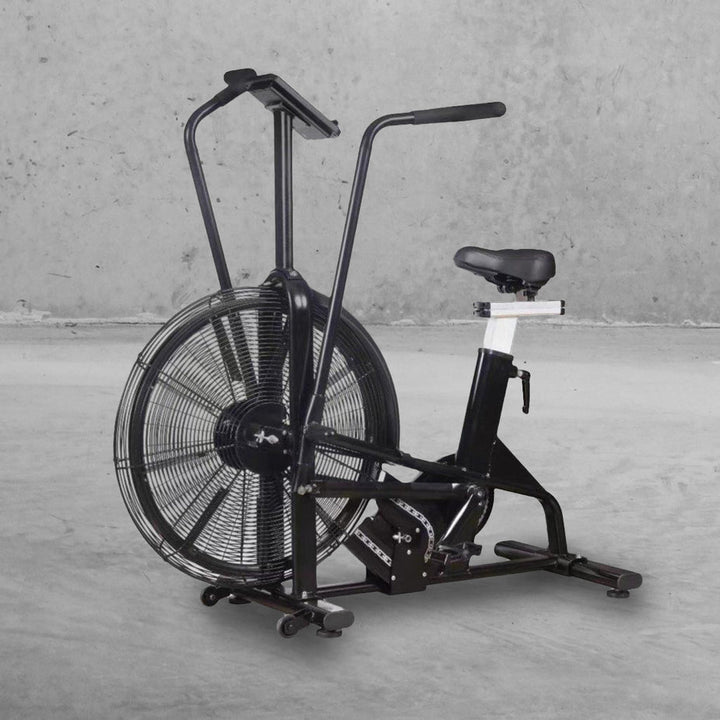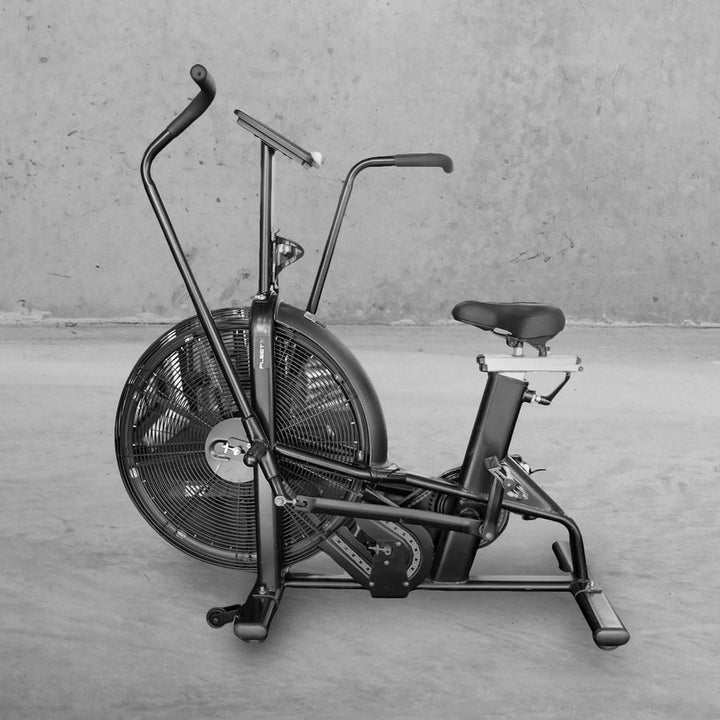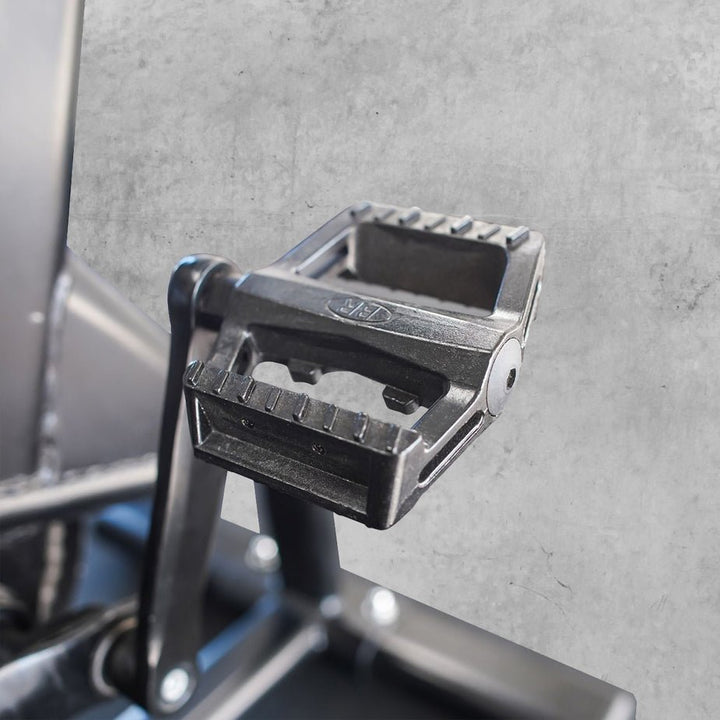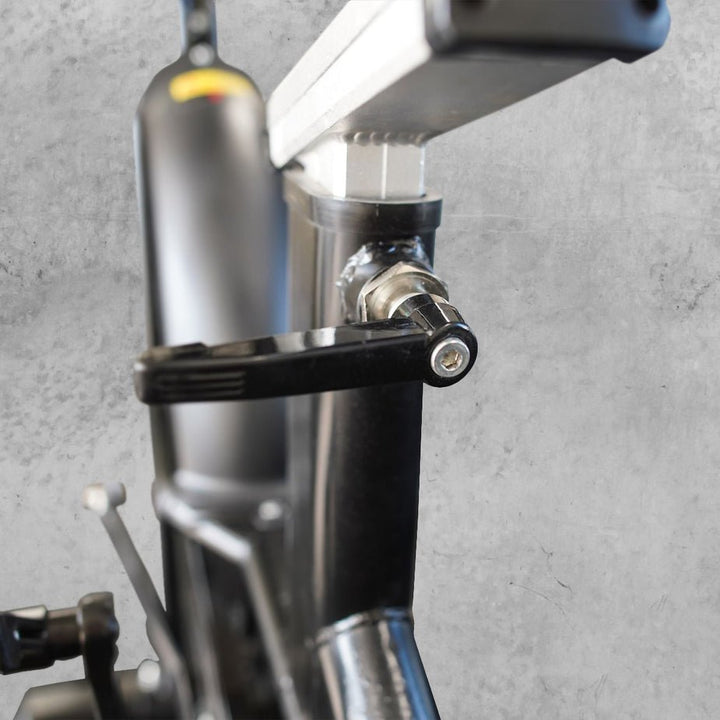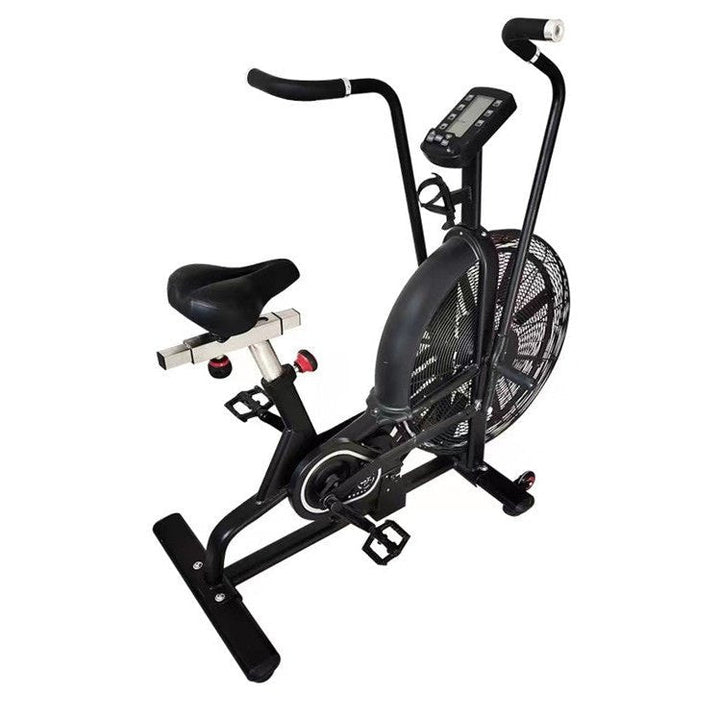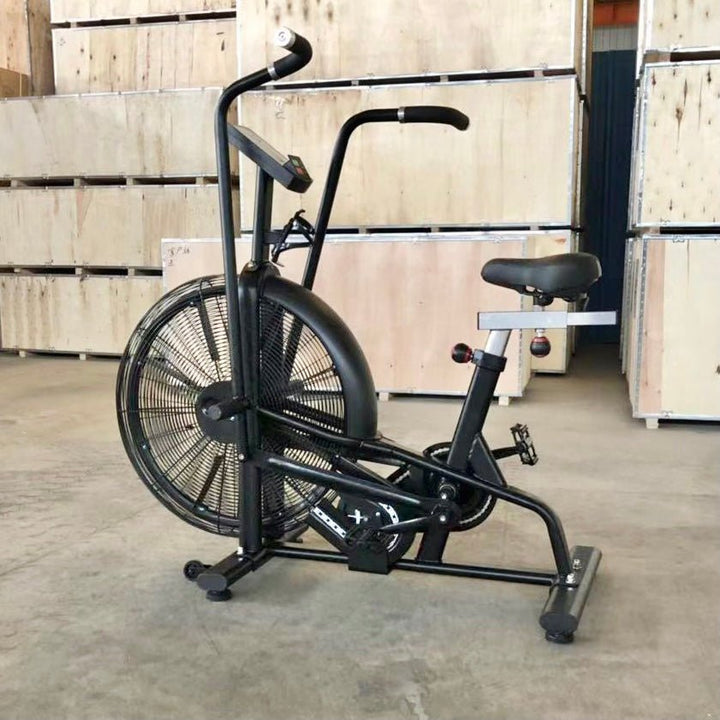Master Your Lifts: A Complete Guide to Barbells

Whether you're a seasoned lifter or just starting out, the barbell is one of the most versatile and essential pieces of equipment in any gym. It’s not just a metal rod with weights—it’s the secret weapon that can take your strength training to the next level.
In this guide, we’re diving deep into the world of barbells, breaking down everything you need to know to make the best choice for your workout routine. Let’s get lifting!
What is a Barbell?
So, what exactly is a barbell? In its simplest form, a barbell is a long metal bar that you can add weight plates to. These plates are secured on each end, allowing you to perform a variety of exercises that target every major muscle group. From squats to deadlifts, bench presses to curls, the barbell is your go-to tool for building strength and sculpting your body.
Barbells come in different lengths and weights, designed to suit various types of lifting. Whether you’re focusing on powerlifting, Olympic lifting, or just want to get a good sweat on, there’s a barbell out there that’s perfect for you.
Types of Barbells Available at BRIXX Fitness

At BRIXX Fitness, we offer a range of barbells tailored to fit your lifting style and fitness goals. Here’s a quick overview of what’s available:
1. Olympic Barbell:
These are the heavy hitters in the barbell world. Olympic barbells are designed for big lifts like squats, deadlifts, and bench presses. They’re longer, heavier, and have rotating sleeves that allow the weights to spin, reducing the strain on your wrists and making them ideal for explosive Olympic lifts.
2. Ezy Curl Barbell:
This barbell has a unique curved design that’s perfect for isolating your biceps and triceps during arm exercises. It’s easier on your wrists and great for targeting those hard-to-reach muscles.
3. Hex Trap Barbell:
If deadlifts are your thing, the Hex Trap Barbell is a game-changer. Its hexagonal shape allows you to step inside the bar, keeping the weight centered and reducing stress on your lower back.
Whether you’re training for power, looking to build muscle, or just want to stay fit, BRIXX Fitness has a barbell that’s right for you.
Regular Barbells vs Olympic Barbells: What’s the Difference?

Now, you might be wondering, what’s the big deal between regular barbells and Olympic barbells? Well, the difference lies in their construction, weight, and the type of training they’re designed for.
1. Olympic Barbell:
The gold standard in lifting. They are designed to be longer and heavier, typically around 20kg, with rotating sleeves that help reduce the torque on your wrists during heavy lifts. This makes them ideal for powerlifting and Olympic lifting exercises like the clean and jerk or snatch. Their construction allows for a slight “whip” or flex when lifting heavy, giving you more control and fluidity during lifts.
2. Regular Barbells
Typically shorter and lighter, making them great for general strength training and more accessible for beginners. They usually don’t have rotating sleeves and are built for a variety of exercises like bench presses, squats, and curls. While they might not be able to handle as much weight as their Olympic counterparts, they are versatile and easier to manage, especially if you’re just getting started or have a smaller workout space.
So, whether you’re looking to compete or just want a reliable tool for everyday workouts, understanding the differences can help you pick the right barbell for your needs.
Benefits of Using a Barbell

Why choose a barbell over other types of weights? Here’s why:
Versatility:
Barbells allow you to perform a wide range of exercises that target multiple muscle groups, making them a cornerstone of any strength training program.
Progressive Overload:
Adding weight plates to your barbell is one of the easiest ways to progressively overload your muscles, which is key to building strength and muscle mass.
Improved Balance and Coordination:
Lifting with a barbell requires stability and coordination, helping you improve your overall athleticism.
Cost-Effective:
A good barbell and set of plates can replace an entire gym’s worth of equipment, saving you money in the long run.
Durability:
Quality barbells are built to last, withstanding heavy use and even the occasional drop without losing their shape or integrity.
How to Choose the Right Barbell for Your Workout
Choosing the right barbell depends on your fitness goals, experience level, and the space you have available. Here’s what to consider:
Weight Capacity:
If you’re aiming to lift heavy, go for a barbell with a high weight capacity like the Olympic 20kg 2.2m Barbell.
Length:
Consider the length of the barbell and how much space you have in your gym. Longer barbells are great for powerlifting, while shorter ones like the 1.5m options are perfect for home gyms.
Knurling:
The texture on the barbell (knurling) helps you grip the bar securely. Choose a bar with knurling that’s comfortable for your hands and provides the grip you need.
Flexibility:
If you plan on doing a variety of lifts, you might want a barbell that offers a good mix of flexibility and rigidity, like the Olympic bars.
Types & Prices of Barbells Available at BRIXX Fitness
At BRIXX Fitness, we offer a range of barbells that cater to different training styles and fitness goals. Here’s a closer look at the barbells available, including their prices, and how each one can fit into your workout routine:
If you’re serious about building strength and pushing your limits, the Olympic 20kg 2.2m Barbell is your go-to. This barbell is designed for heavy lifting, making it perfect for squats, deadlifts, and bench presses. Its impressive load capacity of up to 450kg means it can handle the toughest workouts, and the fine knurling on the bar ensures a solid grip, even during the most intense sessions.
Features:
- Weight: 20kg
- Length: 2.2m
- Load Capacity: 450kg
- Sleeve Diameter: 50mm
- 2 Free Plastic Collars
For those who want to focus on arm training, the Olympic 10kg 1.5m Ezy Curl Barbell is the perfect tool. Its unique curved design reduces strain on your wrists during curls and extensions, making it easier to target your biceps and triceps. The bar’s compact size also makes it ideal for home gyms where space might be at a premium.
Features:
- Weight: 10kg
- Length: 1.5m
- Load Capacity: 317kg
- Sleeve Diameter: 50mm
- Knurled Handle for Comfortable Grip
- 2 Free Plastic Collars
Deadlifting is one of the most effective exercises for building overall strength, and the Hex Trap / Deadlift 24kg 1.5M Barbell is designed to help you do just that. The hexagonal shape of this bar allows you to stand inside it, keeping the weight centered and reducing the strain on your lower back. This makes it perfect for both beginners learning proper form and experienced lifters looking to lift heavier weights.
Features:
- Weight: 24kg
- Length: 1.42m
- Load Capacity: 580kg
- Sleeve Diameter: 50mm
- 2 Free Plastic Collars
The Olympic 12kg 1.8m Barbell offers a great balance between control and versatility. Lighter than the full-sized Olympic bar, it’s easier to manage for beginners and those focusing on form and technique. It’s also versatile enough to be used for both upper and lower body exercises, making it a valuable addition to any home gym.
Features:
- Weight: 12kg
- Length: 1.8m
- Load Capacity: 300kg
- Sleeve Diameter: 50mm
- Fine Knurling for Grip
- 2 Free Plastic Collars
Perfect for those with limited space, the Olympic 10kg 1.5m Barbell is compact yet highly effective. This bar is ideal for a variety of exercises, from squats to presses, offering a versatile solution for strength training in smaller home gyms. Its shorter length makes it easier to store, without sacrificing the effectiveness of your workouts.
Features:
- Weight: 10kg
- Length: 1.5m
- Load Capacity: 300kg
- Sleeve Diameter: 50mm
- Fine Knurling for Grip
- 2 Free Plastic Collars
Comparison: BRIXX Barbells vs Competitors
Let’s take a look at how BRIXX barbells stack up against some of the leading gym equipment brands in Australia. Whether you're lifting for power, precision, or versatility, here’s how our barbells measure up.
BRIXX Olympic 20kg 2.2m Barbell
Advantages:
- High Weight Capacity: With a capacity of up to 450kg, this barbell can handle the heaviest lifts, making it ideal for serious lifters.
- Durable Construction: Made from heavy-duty steel with a chrome coating, it’s built to withstand the rigors of regular use.
- Optimal Grip: The fine knurling ensures a secure grip, even during sweaty workouts.
- Value for Money: Priced at $175.00, it offers excellent value compared to similar high-capacity barbells on the market.
Disadvantages:
- Size: The 2.2m length may not be suitable for smaller gyms.
- Weight: At 20kg, it might be too heavy for beginners who are just starting out with strength training.
Competitor: PowerMax Olympic Barbell
Advantages:
- Durable Build: Known for robust construction and a decent weight capacity, PowerMax barbells are built to last.
- Versatile Use: Suitable for a range of exercises, from powerlifting to CrossFit.
Disadvantages:
- Price Point: Typically more expensive than BRIXX, making it a pricier option for those on a budget.
- Grip Texture: Some users report that the knurling is either too aggressive or not enough, depending on the model.
BRIXX Hex Trap / Deadlift 24Kg 1.5M Barbell
Advantages:
- Ergonomic Design: The hex shape keeps the weight centered, reducing the risk of injury and making it easier to maintain proper form during deadlifts.
- High Load Capacity: Capable of supporting up to 580kg, this bar is ideal for heavy lifters.
- Versatility: Can be used for various lifts, including shrugs and farmer’s walks.
Disadvantages:
- Specialized Use: While excellent for deadlifts, it might not be as versatile for other types of lifts.
- Size: The larger size may take up more space in your home gym.
Competitor: Lifelong Hex Bar
Advantages:
- Durable Construction: Built for heavy-duty use, this hex bar is a solid competitor.
- Comfortable Grip: Designed with knurled handles for a secure hold during lifts.
Disadvantages:
- Price: Generally more expensive than the BRIXX Hex Trap Bar.
- Limited Availability: Not as widely available as BRIXX products, potentially leading to longer delivery times.
Best Exercises to Do with Barbells

Barbells are incredibly versatile, allowing you to perform a wide range of exercises that target all major muscle groups. Here are some of the best exercises you can do with a barbell:
1. Deadlifts:
Deadlifts are one of the most effective exercises for building overall strength. They work your back, glutes, hamstrings, and core. Using a barbell for deadlifts allows you to lift heavier weights, increasing your strength gains.
2. Squats:
Barbell squats are a fundamental exercise for building leg strength. They target your quads, hamstrings, and glutes, and also engage your core for stability. Whether you’re doing front squats or back squats, a barbell is essential for maximizing your gains.
3. Bench Press:
The bench press is the go-to exercise for building chest strength. With a barbell, you can add significant weight, challenging your pectorals, triceps, and shoulders. It’s a staple in any upper body workout routine.
4. Overhead Press:
For building strong shoulders and upper back muscles, the overhead press is a must. Lifting a barbell overhead engages your deltoids, triceps, and core, helping you build upper body strength and stability.
5. Barbell Rows:
Barbell rows are excellent for building a strong back. They target your lats, rhomboids, and traps, while also engaging your biceps and forearms. Adding this exercise to your routine will help improve your posture and upper body strength.
6. Curls:
Using a barbell for curls allows you to lift heavier weights than dumbbells, targeting your biceps more effectively. This exercise is perfect for building arm strength and size.
7. Lunges:
Barbell lunges are great for targeting your quads, hamstrings, and glutes, while also improving your balance and coordination. Adding weight with a barbell increases the difficulty and effectiveness of this lower body exercise.
How to Use Barbells Safely
Using a barbell can be incredibly beneficial, but safety is paramount to prevent injury. Here’s how to use barbells safely during your workouts:
Start with the Right Weight:
Always begin with a weight you can handle comfortably. As you progress, gradually increase the weight to challenge your muscles.
Maintain Proper Form:
Whether you’re squatting, deadlifting, or bench pressing, maintaining proper form is crucial. Keep your back straight, engage your core, and move through the full range of motion.
Use a Spotter:
For exercises like the bench press or squats, having a spotter can provide extra safety and support, especially when lifting heavy weights.
Warm-Up and Cool Down:
Always warm up before starting your workout and cool down afterward. This helps prepare your muscles for the workout and aids in recovery.
Cool Down:
After your workout, cool down with some light stretches to help your muscles recover and reduce stiffness.
How to Maintain Your Barbells

Taking care of your barbells will ensure they remain in excellent condition and last for years. Here’s how to maintain your barbells:
- Regular Cleaning: After each use, wipe down your barbell with a clean cloth to remove sweat and dirt. This helps prevent rust and keeps the knurling sharp.
- Check for Wear and Tear: Regularly inspect your barbell for any signs of wear, such as rust spots or loose collars. Addressing these issues early can prevent them from becoming bigger problems.
- Lubricate Moving Parts: If your barbell has rotating sleeves, lubricate the moving parts occasionally to ensure they continue to spin smoothly.
- Store Properly: Keep your barbell in a dry, cool place, and avoid leaving it on the ground where it can accumulate moisture or dust. Using a barbell rack is an excellent way to keep it off the floor and in good condition.
How to Order Your Barbell
Ordering a barbell from BRIXX Fitness is easy and straightforward. Here’s how you can get started:
- Visit the BRIXX Fitness Website:Navigate to the “Barbells” section to browse the selection.
- Select the Desired Barbell: Choose from various options like the Olympic 20kg 2.2m Barbell, Olympic 10kg 1.5m Ezy Curl Barbell, or the Hex Trap / Deadlift 24kg 1.5M Barbell.
- Add to Cart: Once you’ve chosen your barbell, click “Add to Cart” to include it in your order.
- Proceed to Checkout: Review your items and click “Checkout” to complete your purchase. Here, you can select your preferred payment method and provide your shipping details.
- Complete Your Order: After confirming your order, you will receive a confirmation email with details of your purchase. Your barbell will then be shipped to your specified address.
- Enjoy a Lifetime Warranty: At BRIXX, we stand behind the durability and quality of our barbells with a Lifetime Warranty. From the moment your BRIXX barbell enters your home or gym, it’s covered for life. This warranty guarantees that your barbell will be free from defects in materials and workmanship
Customer Testimonials
Here’s what some of our satisfied customers have to say about their experience with BRIXX barbells:


Frequently Asked Questions (FAQs)
Q: Is there a warranty on BRIXX barbells?
- A: Yes, BRIXX provides a Lifetime Warranty on all our barbells. This warranty covers any defects in materials and workmanship from the date of purchase. Please be aware that it does not cover cosmetic damage, general wear and tear, or damage resulting from improper use.
Q: What is a barbell?
- A: A barbell is a long, straight metal bar that can be loaded with weight plates on each end. It’s used for a variety of strength training exercises, including squats, deadlifts, and bench presses.
Q: What is the difference between a barbell and a dumbbell?
- A: A barbell is a long bar that requires both hands to lift, allowing for heavier lifts like squats and deadlifts. A dumbbell, on the other hand, is a smaller weight held in one hand, used for more isolated exercises.
Q: How much does a standard barbell weigh?
- A: A standard Olympic barbell typically weighs 20kg, while smaller versions, such as those used in home gyms, can weigh 10kg or 15kg.
Q: Are barbells suitable for a home gym?
- A: Yes, barbells are a staple in any home gym. They allow for a wide range of exercises that target multiple muscle groups, making them ideal for strength training at home.
Q: What are Olympic barbells?
- A: Olympic barbells are a type of barbell that adheres to the standards set by the International Weightlifting Federation. They typically weigh 20kg for men’s bars and 15kg for women’s bars, with a sleeve diameter designed to fit Olympic-sized weight plates.
Q: What's the difference between an Olympic barbell and a standard barbell?
- A: Olympic barbells are usually longer, heavier, and have rotating sleeves, which help reduce the strain on the wrists during lifts. They are built to handle more weight and are used in competitive weightlifting. Standard barbells are typically lighter, shorter, and may not have rotating sleeves.
Q: How do I choose the right barbell for my workout?
- A: Choosing the right barbell depends on your fitness goals, space, and the type of exercises you plan to do. Olympic barbells are ideal for heavy lifting and compound movements, while shorter barbells or curl bars are better for targeted muscle exercises and smaller spaces.
Q: Do I need barbell collars, and why are they important?
- A: Yes, barbell collars are important because they secure the weight plates on the barbell, preventing them from sliding off during your workout. This ensures safety and stability, particularly when lifting heavier weights.
Q: Can barbells be used for both upper and lower body exercises?
- A: Absolutely! Barbells are incredibly versatile and can be used for a wide range of exercises targeting both upper and lower body muscles, such as bench presses, squats, deadlifts, and rows.
How do I maintain my barbell to ensure longevity?
- A: To maintain your barbell, regularly clean it to remove sweat and dirt, inspect it for signs of wear and tear, lubricate any moving parts like rotating sleeves, and store it in a dry place, ideally on a barbell rack.




